Investment income crushed by lower yields
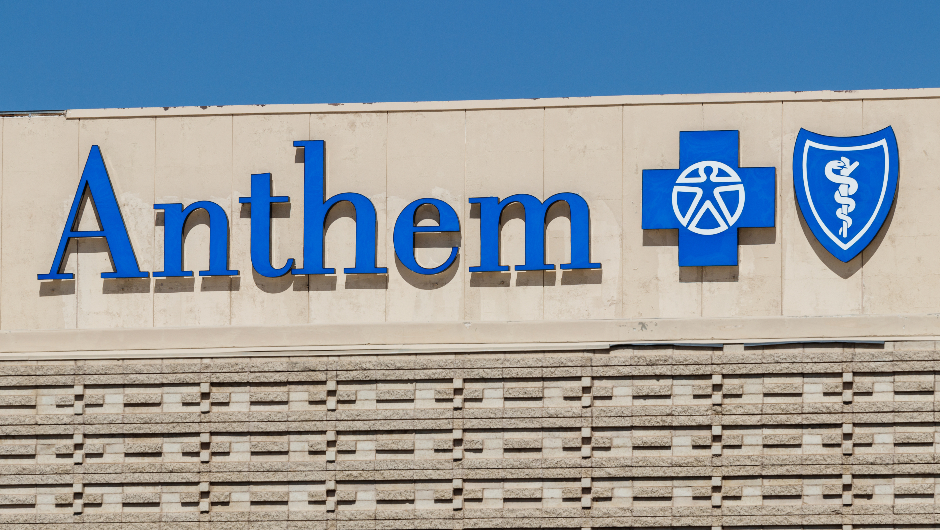
Corporates’ foray into equities and money funds failed to offset falling bond and cash income.
In the first quarter of 2021, low interest rates yet again led to a significant decline in the Effective Interest rate (EIR) of the top non-financial companies in the S&P 500 index. EIR, as measured by dividing investment income by the cash and securities balance fell by 70bps to 1.1% as compared to 1.8% in Q4 2020, as per an analysis done by Eurofinance.
The financial year 2020 was a rollercoaster ride for treasurers. Blindsided by the pandemic, companies were seen hoarding cash in the first quarter of 2020, while government bonds were added to portfolios in the second quarter. But as the pandemic receded, treasurers faced a plunge in investment income as higher-yielding bonds matured and were replaced with lower yielding securities.
The solution: increase risk to boost returns. At the end of Q4, the disclosures by these companies show a net addition of $9.7 billion equity securities and a skyrocketing $25.2 billion in money market funds for the full year. Even though, cash and cash equivalents balance was seen dropping in the last quarter, the figure remained elevated by 16.5% at $335 billion during the same time period.
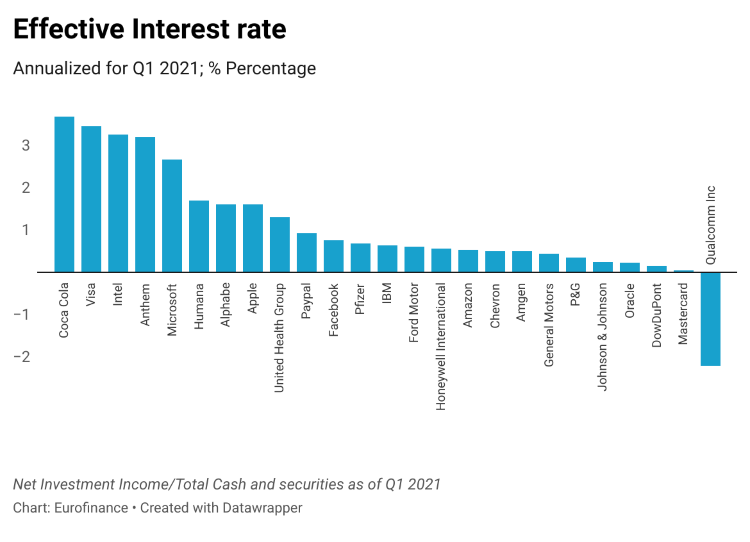
Interest rates on corporate deposits started to move lower as the Federal Reserve reduced its funds rate from 1.59% in March 2020 to almost 0.05% in April 2020 to tackle the economic impact from the lockdowns imposed because of Covid-19. The trajectory is visible in the interest income of these companies which now stand at $11.59 billion, 23% and 44% lower than its level in 2020 and 2019 respectively.
The tail off in EIR for Q1 was led by the semiconductor and software company, Qualcomm, which reported an EIR of -2.22%, the only company in the negative territory. This decline of almost 550bps from 3.25% in the previous quarter was a result of a net realized loss of $85 million during the first quarter as compared to gain of $55 million a year ago; while Coca Cola, Visa and Anthem were amongst the companies which were able to keep the metric above 3%.
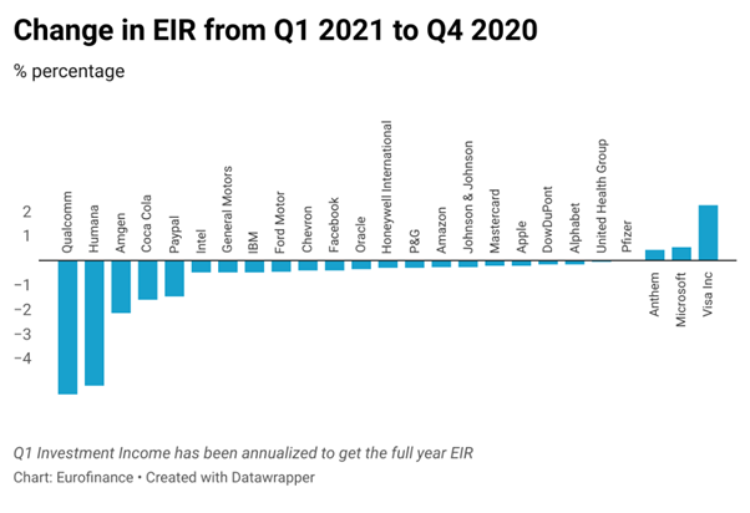
The soft drink manufacturer, Coca Cola saw its EIR decline by 160bps to 3.68% in Q1 2021 mainly due to a 28% fall in its interest income during the same time period. The company in its quarterly filings said, “Decrease was primarily driven by lower returns in certain of our international locations, as well as the unfavourable impact of fluctuations in foreign currency exchange rates.”
In order to provide cushion to the investment returns, the analysis of filings suggested that corporate treasurers were increasing exposure to equity securities and money market funds (MMF) in 2020, as the balance of investments in these assets classes was $117.8 billion at the end of 2020, which is a 35% increase from 2019. The majority of this increase was from the record investments by the technology companies, based on previous analysis by Eurofinance.
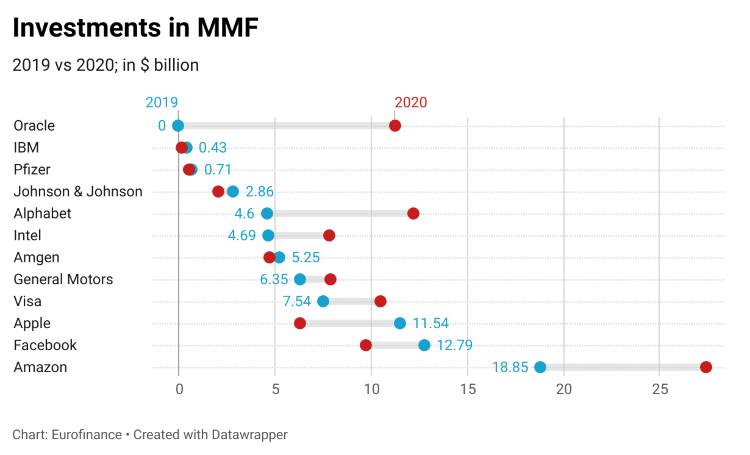
This strategy benefited the financial services company, Visa as its annualized investment income for Q1 2021 rose 2.5 times as compared to 2020, which expanded its EIR by 225bps to 3.45% during the same time period. “Investment income increased in the three and six months ended March 31, 2021 primarily due to higher gains on our equity investments, offset by lower interest income on our cash and investments,” Visa said in its quarterly filings with the SEC.
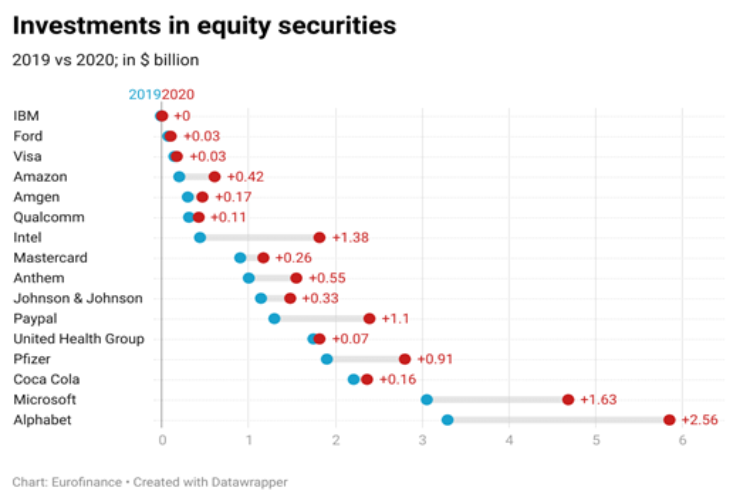
Others including Anthem and Microsoft which followed suit were able to see a reasonable rise in their EIR by 43bps and 56bps respectively. While the pharmaceutical giant, Pfizer was able to keep its EIR stable at .68% even though it didn’t record any interest income in Q1 2021 while net realized gains from equity securities sold during the period was 116% of the total gain realized during the year 2020.